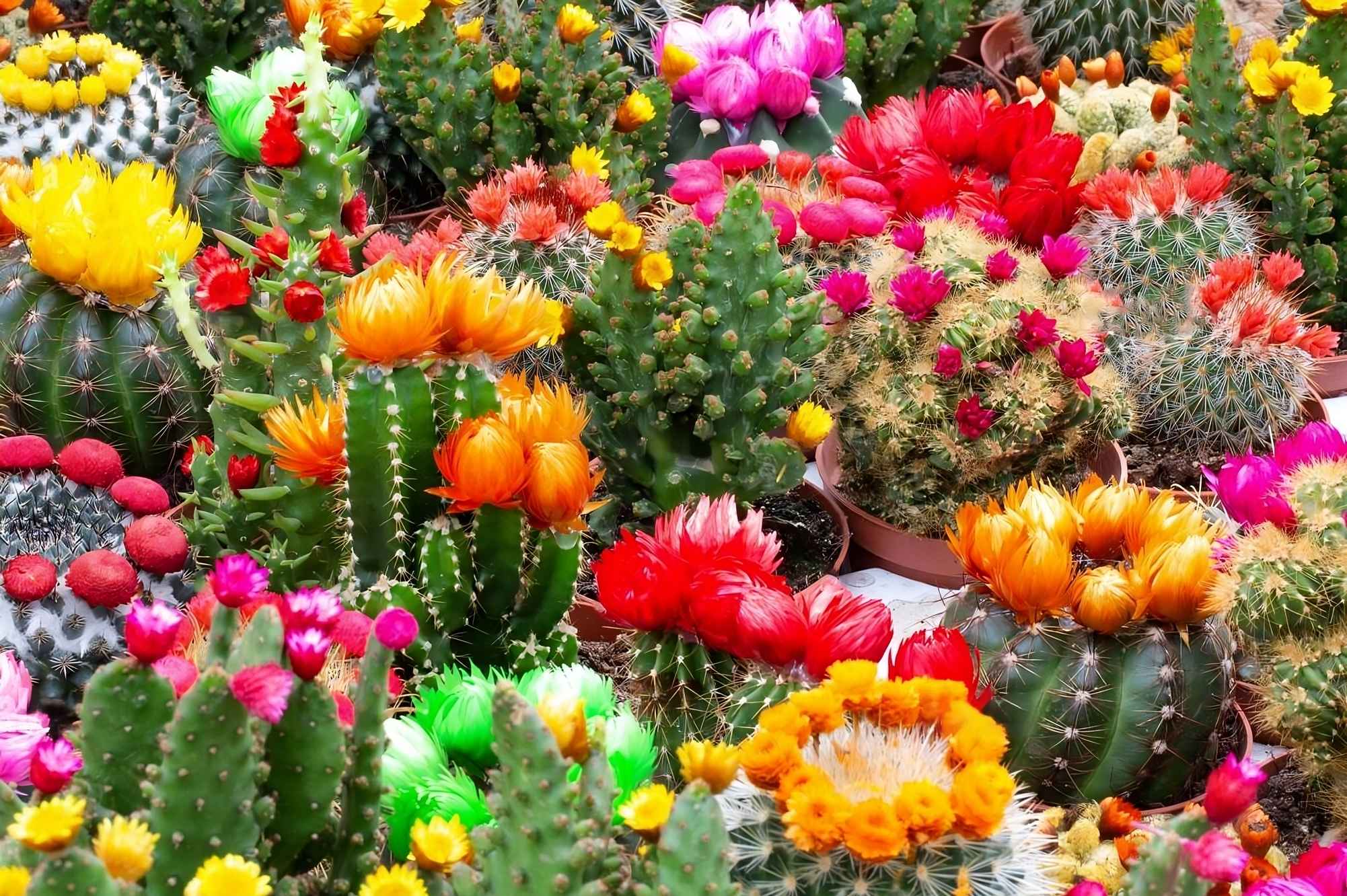The physical structure of cacti has evolved to suit extended periods of aridity, intense high temperatures, and the strong solar emissions found in desert locales. Of the 2,000 distinct cactus species in existence, each originates exclusively from the southern United States and Mexico. To ensure their well-being and encourage blossoming, it becomes crucial to meticulously replicate the precise climatic circumstances of their indigenous habitat.
Cacti Go Into Dormancy in Winter
Cacti have a twofold purpose for conserving their energy throughout winter. Primarily, it’s to endure the harsh cold of the American desert during this season and to gather resources for the upcoming burst of energy demanded in spring. Spring, characterized by copious rainfall and blossoming for most cacti, entails an energy cost, just as rain storage and flowering do. To surmount the winter challenges and conserve energy, cacti naturally enter a period of dormancy referred to as “vegetative rest.”
This vegetative rest denotes a phase where a living organism slows its vital processes to conserve energy, akin to hibernation in animals that reduce their metabolic rate in winter. While in many other plants, like trees which visibly shed leaves, cacti’s dormancy might go unnoticed. Throughout this rest period, growth halts. The initiation of this phase is prompted by the diminishing daylight hours, commencing when daylight spans less than 10 hours. However, photosynthesis persists, necessitating the cacti to remain in a well-illuminated location.
Apart from the requirement for conserving energy, cacti are unable to endure excessive water during the winter season. Their bodies can hold up to 50 to 80% of their overall weight, and introducing surplus water renders them highly vulnerable to freezing. In this period of dormancy, much like the arid conditions of the desert from October to February, the plant should cease to receive any watering and should either remain outdoors or be housed within a greenhouse. Certain species, particularly those coated in a white fuzz, exhibit even greater sensitivity to humidity due to the moisture retention in their “hairs”.
Interestingly, the majority of succulent plants, cacti included, possess the capability to enter a dormant state whenever necessary; if confronted with excessively hot, cold, or dry weather conditions, they automatically shift into a “standby” mode, closing their stomata to minimize water loss through transpiration.
Dry Cold All Winter Long
Within the vast expanse of the American desert, which encompasses Arizona, New Mexico, Utah, Nevada, and extends into Mexico, distinct traits characterize the winter season. Notably, the months of January and February stand out as the driest of the year, with chilly nights and a glaring lack of precipitation. During the early hours of sunrise, temperatures fluctuate between 32 and 42.8 °F (0 and 6 °C), sometimes even plummeting to freezing levels. Remarkably, a significant number of cacti rooted in the desert soil exhibit resilience to the cold, enduring temperatures as low as 23 °F (-5 °C). Specific varieties, such as the hedgehog cacti, showcase an ability to withstand even more extreme conditions, surviving in the chilling range of -13 to -22 °F (-25 to -30 °C).
While the aforementioned extreme temperature ranges are absent in the American desert, they do exist further north in Canada. Certain cactus species have embarked on a journey to this Canadian territory, successfully adapting and thriving in these harsh conditions.
Nevertheless, the sustenance and subsequent blossoming of these cacti depend on a delicate balance during the winter months. The ideal temperature range for their well-being during this period lies between 50 and 53.6 °F (10 and 12 °C) during daylight hours, tapering down to 39.2 to 42.8 °F (4 to 6 °C) at night. Coincidentally, these temperature averages typify the climatic norms experienced within the American desert during the winter season.
However, a cautionary tale emerges regarding the care of cacti. Keeping cacti indoors, protected from the elements, at a constant temperature of 68 °F (20 °C) all year has negative consequences. This practice disrupts their innate biological rhythm, deprives them of their vegetative resting phase, and leads to their death.
It is the return from the resting period in spring that brings cacti out of their dormancy; the first flower buds usually begin to appear within a specific period after heavy rains. For potted cacti, significant amounts of water are needed starting in April if you wish to cultivate beautiful, fluorescent flowers, much like the abundant rains in the American desert.
